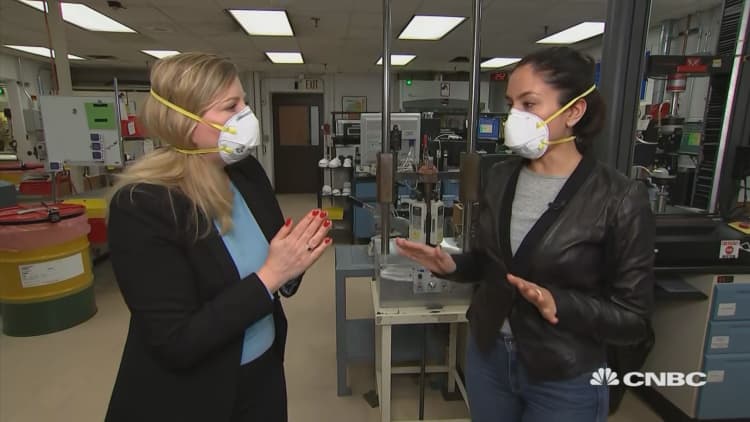At least 80 people in the U.S. across 13 states have been confirmed to have COVID-19, or coronavirus, according to most recent information from the Centers for Disease Control and Prevention.
Officials maintain that the immediate risk to the American public, "who are unlikely to be exposed to this virus at this time," is currently low, but have recommended that some Americans take precautionary "social distancing measures" including, but not limited to, working from home.
The recommendation has highlighted the inequality of who can and can't work from home.
"Organizations that can provide those options for their employees, I think that's a good thing to do," Alexander Colvin, a labor and employment researcher and dean of Cornell University's Industrial and Labor Relations School tells CNBC Make It. "But the reality is that there are lot of workers who won't have that option, and we need to be concerned about their situation."
Big tech is leading the way
Tech companies like Google, Microsoft and Facebook have publicly stated that workers should feel free to work from home if they feel ill. Twitter is "strongly encouraging all employees globally to work from home if they're able."
But this is not the reality for most companies.
A recent report from human resource consulting firm Robert Half found that as many as 90% of workers go to work while under the weather, and according to the most recent American Time Use Survey from the Bureau of Labor Statistics, just 24% of working adults do some or all of their work from home.
Among these workers who do sometimes work remotely, the average amount of time spent working from home was just 2.94 hours, indicating that even those who sometimes work from home will need to adjust significantly if workplaces were to start shutting down offices for an extended period of time.
"I'm helping a lot of companies right now put together their coronavirus plans," labor and employment attorney David Barron tells CNBC Make It. "One big piece of that is working from home, and most companies are not there yet."
Many employees want to work from home, because of being afraid to be in their workplaces, or taking public transportation. But even if they have the technology, companies so far seem to be requiring workers to be present "on a normal level," he said.
Many companies seem to think concerns are "a little bit overblown" and have not "opened up the flood gates" to allow working from home yet, Barron said.

Industry matters
For the many Americans who do not work in high-tech offices, across industries like health care, manufacturing and retail, working from home will not be logistically possible.
"Working from home is certainly a trend among some companies, in the tech industry, even in the higher education industry, but when you think about major employers like Starbucks or McDonald's, their employees can't work from home," says Colvin.
Indeed, a person's ability to work from home is highly dependent on the line of work they are in. According to the BLS, nearly 38% of workers in "management, business and financial operation occupations" report doing some or all of their work from home, making them the most likely to do so.
However, roughly 22% of sales workers, 16% of construction workers, 11% of office administration workers, 11% of service workers, 10% of installation, maintenance and repair workers, 8% of transportation workers and 6% of production workers do some or all of their work from home.
It is important to note that these industries are often segregated by race and gender, effectively giving certain workers a higher likelihood of being able to work from home than others. For instance, white and Asian workers are more likely to work in a professional management position than black and Latino workers.
Highly-educated high earners
Beyond industry, other demographics such as education and earning level also are strong predictors of a worker's likelihood of working from home.
BLS data indicates that among workers with an advanced degree, about 37% perform some work from home, but just 12% of those with just a high school diploma and no college degree did the same.
And ultimately, these stratified dynamics can be seen across income brackets.
Approximately 35% of workers who earn $1,531 or more per week (about $79,612 per year) report spending some time working from home. That's significantly more than those making between $961 and $1,530 per week (23%), $631 and $960 per week (11%) and less than $630 per week (8%).
Colvin adds that these lower-wage workers "tend to be the same workers who are lacking paid sick leave."
"So they're in a double bind," he says.
Like this story? Subscribe to CNBC Make It on YouTube!
Don't miss:



